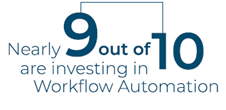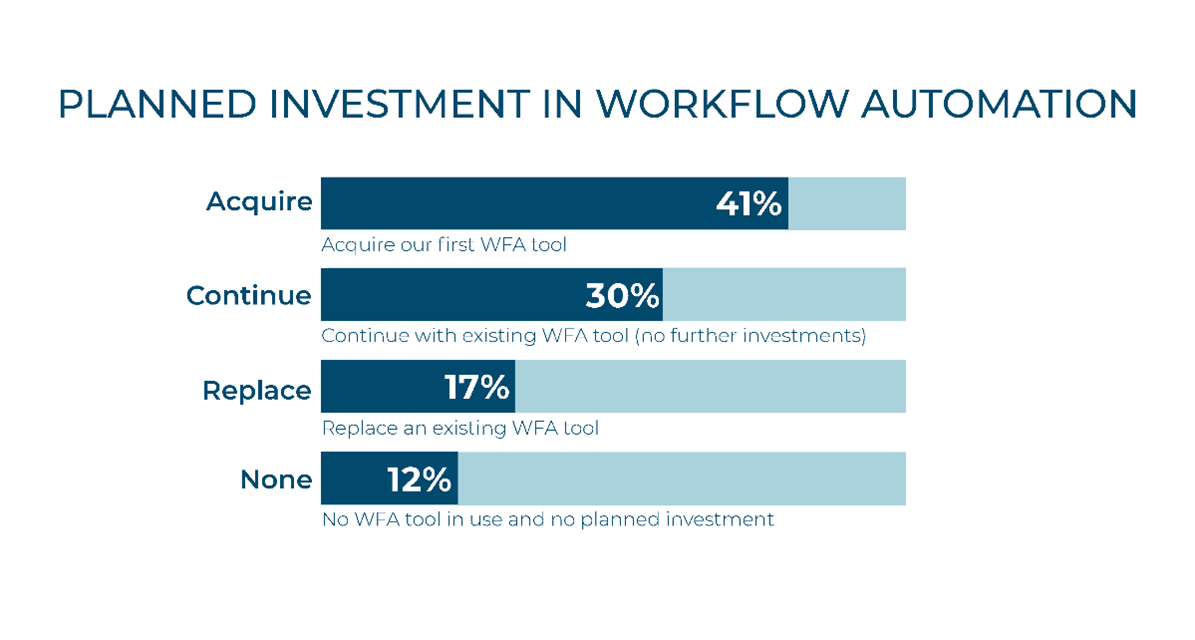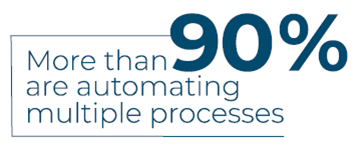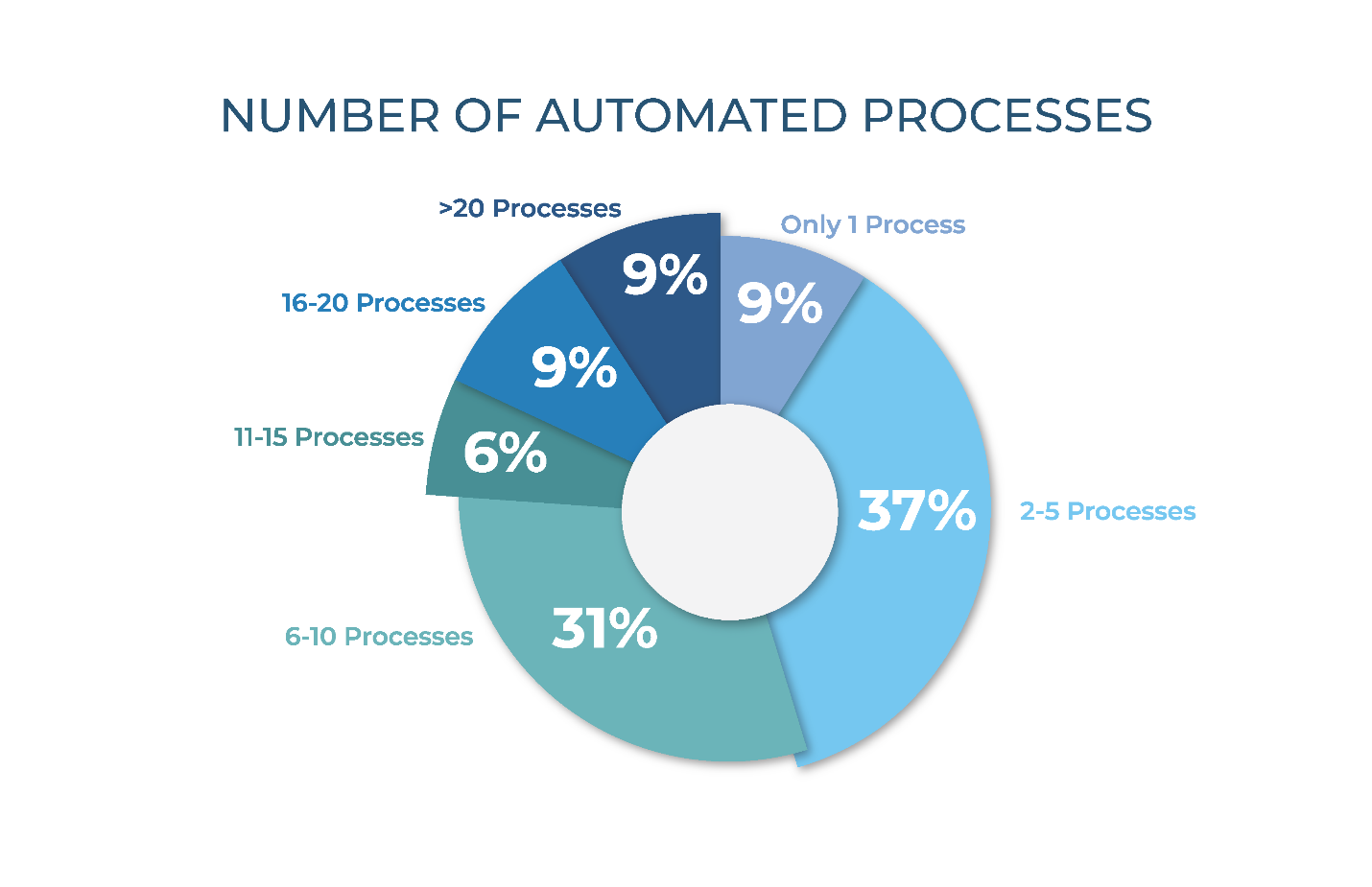
Advice

The Benefits of Embracing Workflow Automation
- Business of law
- 3 Mins
The principle of doing more with less is crucial in today’s rapidly changing business world. In-house legal departments consistently face rising workloads in the face of frozen headcounts. These market conditions paired with rapid innovation in the legal tech market, are leading many to see technology as a much-needed ‘pressure relief valve’ driving enthusiasm and investment, particularly in the category of legal workflow automation (WFA) solutions.
To help in-house legal departments navigate their WFA solution journey, Hyperion Research, an Epiq Company published the 2024 Low/No Code Workflow Automation MarketViewTM Report for Corporate Legal Departments. This report provides definitive analysis of trends in the legal tech sector, in-depth evaluations of solution providers, and practical guidance.
This blog shares several key findings from the report.
In-house legal departments are investing in Workflow Automation

While low/no code workflow technology has appeared in business process management (BPM) and other enterprise markets for some time, recently some vendors have been marketing a distinct set of workflow automation (WFA) solutions for the corporate legal market. Hyperion Research benchmarking data shows a significant wave of investment underway in this category. While 41% of respondents reported their intention to acquire their first WFA tool in the next 12-18 months, more striking is the slim minority of respondents who are not pursuing WFA capabilities. Only 12% of respondents indicated they neither currently use nor have plans to acquire or upgrade these technologies.

Starting simple and going big
Corporate legal departments are expanding the use of low-code and no-code workflow automation technology. Not only by making initial investments in technology, but also by expanding the number of processes they automate.
Where to begin
A common starting point for Legal Departments is a “Legal Front Door” where legal service requests are made, and questions are answered. This use case leads to capturing operational data, providing insight into demands on the legal function and operational performance. The benefits range from immediate to long-term and include:
- Some needs can be met immediately. Questions are answered, policies are provided, training videos are obtained, and low-risk contracts are fulfilled.
- Work can be triaged or diverted, routing the right issues to the right individuals, or filtering out requests outside the legal department’s mandate.
- Necessary information and documents can be collected, alleviating the burden on legal staff to ask questions and gather relevant artifacts to address matters and draft or negotiate contracts.
- Workflows can be triggered, reducing manual effort, and following standardised processes which also improve compliance. Data points obtained support expediting specific workstreams.
- Operational data capture begins and eventually accumulates to provide insight into demands on the legal function and operational performance (e.g. categories of request, how long it takes to meet client’s needs, time intervals for each step, where bottlenecks lie, etc.).
- Value can be demonstrated. The work that came through the Legal Front Door and got addressed can be shared via dashboards, helping Legal tell the story of what and how much it does.

After a legal department has implemented a Legal Front Door, we have found that the automation of processes often quickly expands. Hyperion Research benchmarking data shows that 54% of legal departments implementing workflow automation technology (WFA) have upwards of six automated processes, and 24% have more than ten automated processes.

Covered use cases span across the corporate legal and compliance practice groups. After general intake and triage, the most common applications of workflow automation relate to contracting (intake, fulfilment, and addenda) and compliance (assessments, tracking, reporting, review and approval), followed by IP use cases.
Workflow Automation market outlook is bullish
Given the high degree of customer enthusiasm, continued growth is expected as workflow technology continues to lower the barriers to entry compared to traditional business process automation platforms. Increasing accessibility is driven not only through pricing but also by expanding arsenals of out-of-the-box applications and integrations. Newer entrants (like Josef and Checkbox) often focus on pushing the boundaries of pure no-code application development, while more established low/no code vendors (like Mitratech TAP, Neota and Kim) are offering more turn-key capabilities and working hard to simplify the user experience for “citizen developers.”
Quickly expanding use of Large Language Models
Solution providers in this category have long drawn from several key facets of AI, and some were already experimenting with large language models (LLMs) before ChatGPT exploded onto the scene. Free beta modules abound, as WFA competitors seek to capitalise on the hype in the market by deploying generative AI capabilities, potentially unlocking a more conversational approach to end-user interactions – whether answering policy questions or responding to email.
Over time, expect more LLM capabilities to be built-in rather than bolted-on. Legal service intake “portals” will become ever more sophisticated - capable of processing unstructured data (like emails). Structured forms and bots will more often be chained with LLMs, taking in information to kick off workflows. As customers get more comfortable with using their own knowledge base (e.g., corpus of policies, approved contracts), we anticipate expanding use cases and refinement in certain features, such as content and document analysis and redlining.
Choose the right workflow tool for your corporate legal department
Determining the right tool for your workflow automation needs is no small task. To help, the 2024 Low/No Code Workflow Automation MarketView™ report provides a landscape of the technology solutions, explains key concepts and management models, defines key solution components for buyers to consider when defining and assessing fit with their requirements, and profiles and evaluates 9 advanced solutions. Download a whitepaper version of the report today.
The contents of this article are intended to convey general information only and not to provide legal advice or opinions.